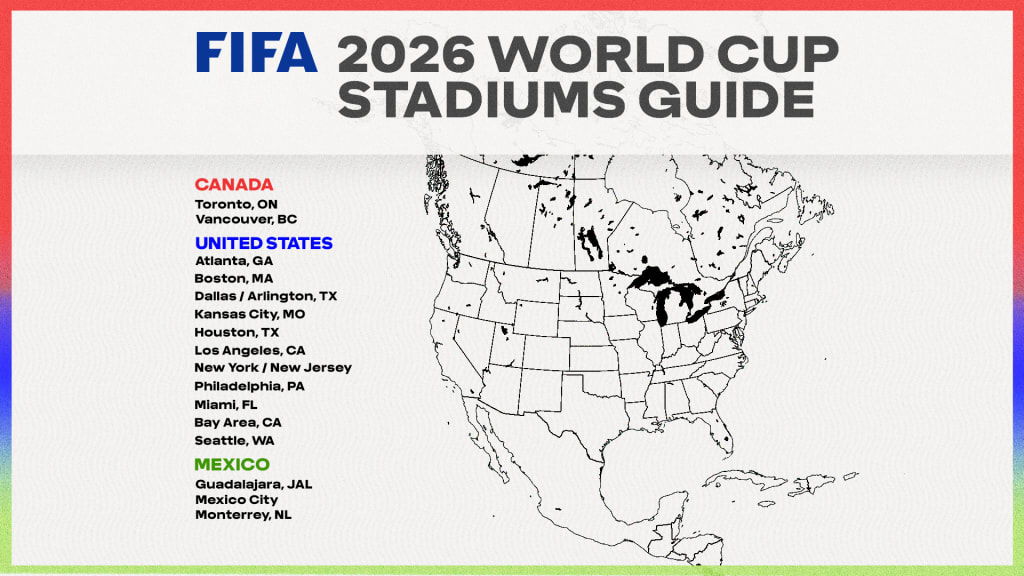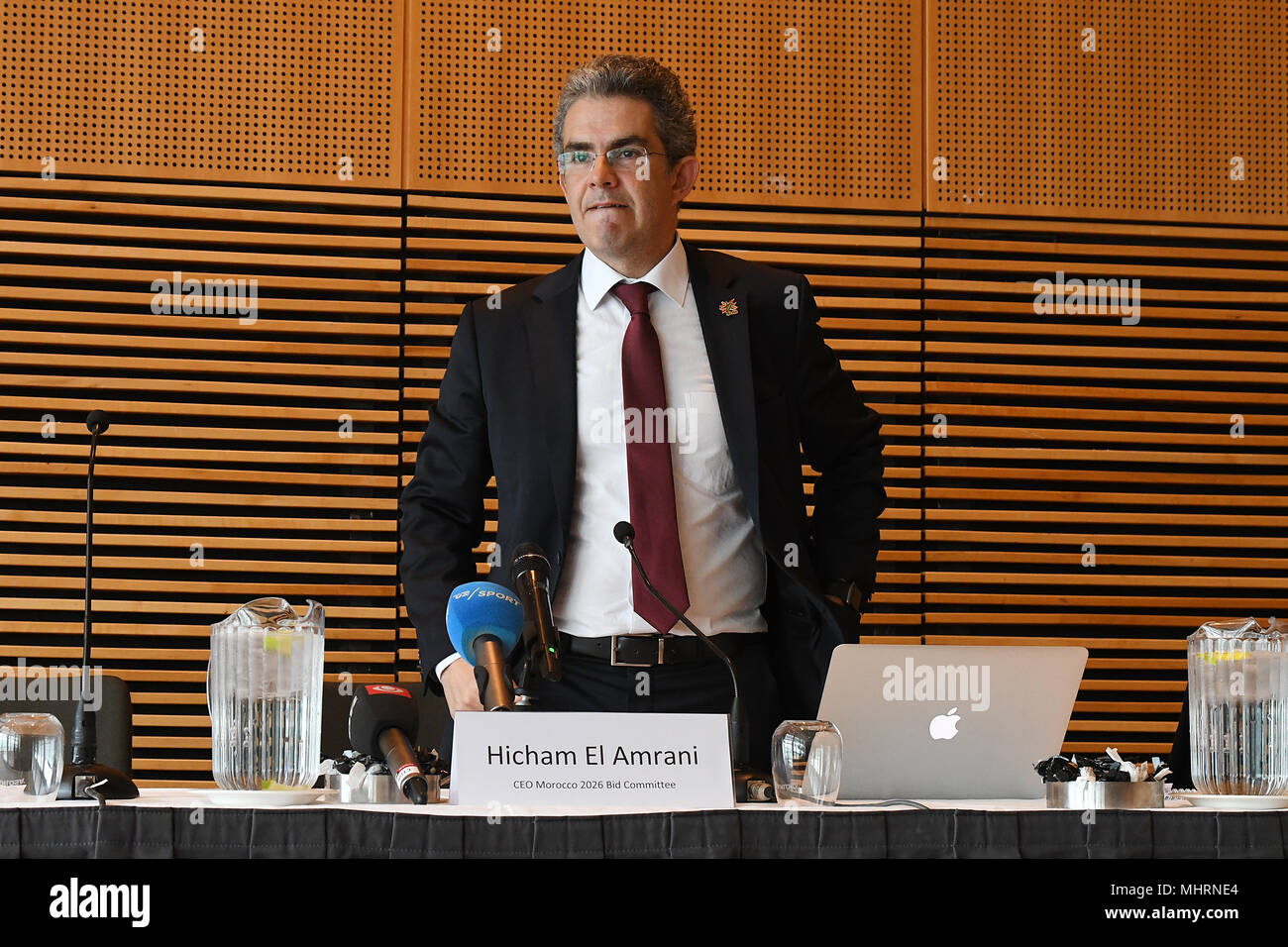As excitement mounts for football enthusiasts worldwide, anticipation surrounds the location of the highly anticipated 2026 FIFA World Cup. The prospect of witnessing top-tier international teams vying for glory raises the crucial question – where exactly will this prestigious event unfold? With the selection process emphasizing inclusivity and diversity, the venue promises to be a spectacular stage for the beautiful game. Join us as we delve into the intricate details and unveil the mystery surrounding the host country’s selection. Stay tuned to discover the captivating destination that will host the 2026 FIFA World Cup and immerse yourself in the passion and fervor of world-class football.
Introduction to the 2026 FIFA World Cup
The 2026 FIFA World Cup is one of the most anticipated sporting events globally, bringing together football enthusiasts from all corners of the world.
Hosting Countries
The 2026 FIFA World Cup is set to be hosted across three countries: the United States, Mexico, and Canada.
This unique hosting arrangement, known as the United Bid, will see matches played in various cities across the three nations.
Venue Selection Process
The selection of venues for the 2026 FIFA World Cup involved a rigorous process to ensure that the stadiums met the required standards set by FIFA.
Each host country proposed a list of potential venues, and after careful evaluation, a final list of stadiums was confirmed for the tournament.

History of the FIFA World Cup
The FIFA World Cup is a prestigious international soccer tournament that takes place every four years, with the first tournament held in 1930 in Uruguay. Over the years, the World Cup has grown in popularity and has become one of the most-watched sporting events globally.
The Beginnings
The idea of a worldwide soccer tournament was proposed by FIFA’s then-president, Jules Rimet, resulting in the inaugural World Cup in 1930. This historic event laid the foundation for the future of the tournament.
Expansion and Growth
Since its inception, the FIFA World Cup has expanded to include more teams and countries, allowing for greater participation and diversity. Each tournament brings together nations from around the globe.
- The tournament has seen several format changes and innovations over the years
- Notable moments include Brazil’s dominance in the 1950s and 1960s and the rise of new footballing nations

Selection Process for the 2026 FIFA World Cup Location
The process of selecting the location for the 2026 FIFA World Cup was meticulous and comprehensive. National associations submitted bids to host the prestigious event, which were then evaluated based on various criteria.
Evaluation Criteria
The evaluation process considered factors such as infrastructure, stadiums, accommodations, transportation, security, and overall readiness to host a global sporting event of such magnitude. The evaluation criteria were designed to ensure that the selected host country could provide a world-class experience for players, officials, and fans alike. Additionally, sustainability and legacy aspects were also taken into account.
Final Decision
After a thorough assessment of all the bids, the FIFA Council made the final decision on the host country for the 2026 World Cup. The country that demonstrated the best capabilities to meet the requirements and expectations set by FIFA was chosen to host the tournament. The decision was announced amid great anticipation and excitement within the football community.
Candidate Cities and Potential Hosts
With the 2026 FIFA World Cup on the horizon, the race to determine the host cities is in full swing. Various cities across the world are vying to be a part of this prestigious event.
Potential Host Countries
Key countries such as the United States, Mexico, and Canada will collectively host the 2026 FIFA World Cup, marking the first time in history that three nations will serve as hosts.
These nations will be working together to ensure that the tournament is a success, showcasing the unity and diversity of North America.
Candidate Cities
Each host country is expected to present a selection of cities that will stage matches during the tournament. These cities will need to meet stringent criteria to be selected as official host venues.
- New York City, USA
- Mexico City, Mexico
- Toronto, Canada
Factors Influencing the Decision
Several factors play a crucial role in determining the location for hosting the 2026 FIFA World Cup. These considerations ensure that the chosen country provides a suitable environment for this prestigious event.
Infrastructure Readiness
The host country must have top-notch infrastructure to accommodate the influx of international visitors and teams. This includes stadiums, training facilities, transportation systems, and accommodations. Preparation is key to the success of the event.
Economic Stability
Financial stability is essential for hosting such a significant global event. The country must showcase robust economic conditions to support the investments required for organizing a successful World Cup. A sound economic background is vital for infrastructure development.
Political Climate
The political situation of the host country plays a crucial role in the decision-making process. A stable political environment ensures smooth coordination between the organizing committee and government bodies, reducing potential disruptions. A positive political atmosphere sets the stage for a successful tournament.
Announcement of the 2026 FIFA World Cup Location
The 2026 FIFA World Cup will be hosted across three nations – the United States, Mexico, and Canada, making it the first World Cup to be held in multiple countries simultaneously.
United States
In the United States, several cities have been selected to host matches, including New York City, Los Angeles, Miami, and Chicago.
Mexico
Mexico City will serve as the main host city in Mexico, with matches scheduled to take place at the iconic Estadio Azteca.
Canada
In Canada, Toronto, Vancouver, and Montreal are among the selected host cities for the tournament.
Overview of the Selected Location
The 2026 FIFA World Cup is set to take place in three North American countries – the United States, Canada, and Mexico. This will be the first time in the tournament’s history that it will be hosted by three nations.
Host Countries
The selected location for the 2026 FIFA World Cup will showcase the diverse cultures and landscapes of the United States, Canada, and Mexico, offering an exciting blend of traditions and modernity.
The three host countries have been diligently preparing to welcome football fans from around the globe to witness the world’s most prestigious sporting event.
Venue Selection Process
The selection of venues across the three countries has been a meticulous process to ensure a memorable and successful tournament. Each stadium chosen will play a vital role in hosting the matches and creating an unforgettable experience for spectators.
- State-of-the-art facilities
- Iconic stadiums
- Accessible locations
Infrastructure Development and Preparations
As the anticipation for the 2026 FIFA World Cup builds up, host countries are actively engaging in infrastructure development and preparations to ensure a successful event.
Stadium Upgrades
The host nations are investing in upgrading existing stadiums to meet FIFA’s standards for hosting matches, ensuring seamless gameplay for teams and fans alike.Exciting renovations are underway.
Transportation Enhancements
Improving transportation networks is a key focus, with enhancements in public transport, road infrastructures, and airport facilities to accommodate the influx of visitors during the grand event.
- New rail networks
- Expanded bus services
- Upgraded highways
Benefits and Challenges of Hosting the 2026 FIFA World Cup
Hosting the 2026 FIFA World Cup offers a plethora of benefits to the chosen country. It provides a unique opportunity for economic growth through increased tourism, infrastructure development, and job creation.
Boost in Tourism
The influx of football fans from around the world is a significant boost to the local tourism industry. This surge in visitors can lead to higher revenue for hotels, restaurants, and other businesses supporting the event.
Infrastructure Development
Hosting the World Cup requires investments in infrastructure such as stadiums, transportation, and accommodation. While this can be a challenge due to the high costs involved, it also leaves a lasting legacy for the country, benefiting its citizens long after the event ends.
Frequently Asked Questions
-
- Where will the 2026 FIFA World Cup take place?
- The 2026 FIFA World Cup is set to take place in Canada, Mexico, and the United States as the first-ever World Cup to be jointly hosted by three countries.
-
- Which cities will host the matches during the 2026 FIFA World Cup?
- There will be 16 host cities in total across the three countries, with 10 in the United States, and 3 each in Canada and Mexico. Some of the cities include Los Angeles, Toronto, and Mexico City.
-
- What are the reasons behind having three countries co-host the 2026 FIFA World Cup?
- The decision to have multiple countries co-host the World Cup was made to promote unity and shared opportunities among nations, as well as to reduce the environmental impact by utilizing existing infrastructure across the three countries.
-
- Will there be any new stadiums built for the 2026 FIFA World Cup?
- New stadiums are not expected to be built specifically for the World Cup, as the host countries already have existing stadiums that meet FIFA’s requirements. However, some renovation and upgrades may be undertaken to ensure the venues are ready for the tournament.
-
- How many teams will participate in the 2026 FIFA World Cup?
- The 2026 World Cup will feature an expanded format with 48 teams participating, an increase from the current 32-team format. This change allows more nations to be part of the prestigious tournament.
Final Thoughts: Where is the 2026 FIFA World Cup Set to Take Place?
As we eagerly anticipate the 2026 FIFA World Cup, the spotlight shifts to North America, where the United States, Canada, and Mexico will come together to host this global spectacle. The tournament is set to take place across various cities in these three countries, promising an unparalleled experience for players and fans alike.
This event will not only showcase top-tier football talent but also celebrate the unity and diversity of these nations. With state-of-the-art facilities and passionate supporters, the 2026 FIFA World Cup is sure to be an unforgettable experience for all involved.
Mark your calendars for 2026 and get ready to witness football history unfold in a region rich with culture, excitement, and sporting fervor. The countdown begins now!

